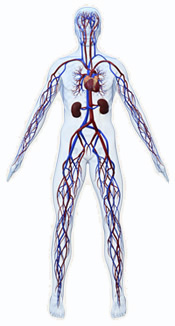Probiotics and Inulation Together
People take probiotics to increase the amount of friendly bacteria in their digestive system. Some people after a period of time can stop taking probiotics because they have introduced enough good bacteria to crowd out the bad bacteria, and the good bacteria continue to thrive and do well. This situation and results are ideal. Unfortunately many people?s diets hinder these results. Their diets may consist of foods that change the pH level of their intestines and colon, thereby limiting the success of the new friendly bacteria they are introducing by taking a probiotic. Or their diet may consist of foods that aren?t able to be used as food by the friendly bacteria, therefore the friendly bacteria dies and the person will continue to be dependent on the probiotic. This is where Inulation comes in. By taking Inulation with a probiotic you are providing food for the friendly bacteria to survive and multiply, thereby increasing results.
Effective?
Recent in vitro and in vivo research has shown that inulin selectively stimulates beneficial bacterial growth equal to or surpassing that of its short-chain synthetic counterparts, FOS/oligofructose in magnitude. Human experiments conducted by Gibson et al. (1995) at the Dunn Clinical Nutrition Center (UK) have shown that ingestion of moderate bifidobacteria, rendering them the numerically predominant specie in feces and colon. Beneficial lactobacilli are also stimulated, but to a lesser extent. At the same time, the numbers of undesirable bacteria stagnate or decrease, the total bacterial count remaining essentially unchanged. This shows that each gram of inulin stimulates the metabolism and selectively increases the activity of healthy intestinal bacteria, potentially leading to healthier, better-balanced colon.
 Mechanism of Action
Mechanism of Action
Inulin may suppress appetite and mediate carbohydrate and lipid metabolism for relatively long periods of time. Inulin, a complex non-digestible carbohydrate is slowly metabolized, being fermented by colon microflora to produce SCFAs and lactic acid that the body uses for long-term energy, rather than the normal metabolic pathway for digestible carbohydrates, involving breakdown by digestive enzymes and relatively rapid absorption in the small intestine. This slow method of metabolism has the advantage of providing a glycemic index of zero, preventing hunger based on the fact that an individual does not enter a hypoglycemic state. Research suggests, in addition to appetite suppression, the SCFAs (particularly propionic acid) increase glycolysis and decrease gluconeogenesis, normalizing blood glucose levels over extended periods of time and help to reduce lipo-genesis, reducing blood lipid levels, particularly low-density lipoproteins (LDL) and triglycerides. Research further suggests these SCFAs inhibit fat production by regulating the key enzyme, carnitine acyltransferase that converts calories into fat. Normally, after a meal, carbohydrates are stored as glycogen in the liver and muscles to be used by the body for energy. When glycogen stores become full, the brain receives a message signaling the body to convert excess carbohydrate to fat. Studies indicate the inulin temporarily regulates this process, resulting in over time a significant reduction in plasma triglyceride, phospholipid and cholesterol levels, primarily the low-density lipoprotein fraction (LDL), while not affecting the beneficial high-density lipoprotein (HDL) fraction.
 Dietary Fiber Effects and More?
Dietary Fiber Effects and More?
As we age metabolism slows and the effects of everyday wear and tear on our bodies become ever more apparent. To slow or minimize these aging effects it is important that we exercise regularly and maintain proper nutrition. Eating right means consuming foods that provide our bodies not only with needed energy but also aid our body’s functions to ward off common afflictions of the aging process such as bone loss, reduced immune capacity, lactose intolerance, heart disease, cancer, adult onset diabetes, menopausal effects and digestive problems and food intolerance’s.
Inulation®™ – unlike other dietary fibers, which bind metals and raise concern about mineral deficiency, inulin intake does not inhibit mineral absorption. To the contrary, research indicates that the SCFAs produced from inulin fermentation decrease the intestinal pH and stimulate proliferation of colon epithelial cells, enhancing the absorption of certain minerals. (particularly Ca2+, Mg2+, Cu2+, Zn2+ and Fe2+) – important considerations as metabolism changes for post-menopausal women and elderly, as in these groups it may prove effective in preventing, or delaying the onset of osteoporosis. Additionally, SCFAs stimulate water and electrolyte absorption, two important factors in the fight against diarrhea.
 Inulation™ for Women’s Health
Inulation™ for Women’s Health
As women age, their bodies go through several biological changes, requiring special help to ease the transitions and minimize potential detrimental effects on their health along the way. To minimize these potential problems, it is important that one exercises regularly and maintains proper nutrition. Nutritional energy is important in maintaining bodily functions, but the body, particularly the female’s, also needs help in preventing and minimizing the effects of their biological changes. Inulation™ provides an effective means to aid the woman’s biologically changing body through its transitions. Each gram of Inulin stimulates the metabolism and selectively increases the activity of healthy intestinal bacteria, leading to a healthier, and fuller life.